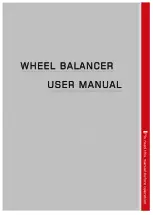
8.2
Pneumatic installation
•
Make pneumatic connections cable ends as short as possible.
•
Ensure sufficient tightening torque for fittings and sealing the pneumatic connections. A leakage
can lead to unwanted system behaviour.
For details on pneumatic installation, see circuit diagram
è
1. Connect input [1] of valve unit VPCB with a service unit and filter mesh 5 µm (not in scope of deliv-
ery). Tubing diameter:
³
12 mm
2. Connect pressure gauge input [H] of valve unit VPCB with handle VAOH.
–
Tubing diameter: 6 mm
–
Tube length:
³
0.5 m …
£
10 m.
3. Assemble the silencer (not in scope of delivery) as follows:
–
Mount the silencer on the exhaust port [3] of the valve unit VPCB.
–
Mount the silencer on the exhausted cylinder chamber.
Ensure sufficient sizing of the silencer to prevent backpressure and increased noise emissions. In
the case of a ducted exhaust, connect the exhaust compressed air system instead of the silencer.
8.3
Electrical installation
WARNING!
Risk of injury due to electric shock.
•
For the electric power supply, use only PELV circuits that ensure a reliable electric disconnection
from the mains network.
•
Observe IEC 60204-1/EN 60204-1.
Not all required parts are included in the scope of delivery. For the complete installation, the actuating
elements for the following functions are needed at a minimum:
–
Operation enable
–
System enable
–
Switch between the operating modes
–
Reset fault
Details on the electrical installation are described in the enclosed circuit diagram and in the corres-
ponding application notes
è
All pre-assembled cables are labelled with inscription labels [-WDx] in accordance with the circuit dia-
gram.
1. Connect the connecting cable of the displacement encoder of the DNCI to the corresponding input
of the valve block VPCB.
2. Push the plug sockets with cables [-WD1] and [-WD2] onto the corresponding shut-off valves of
the valve unit VPCB.
Installation
11
Festo — YHBP — 2020-09























